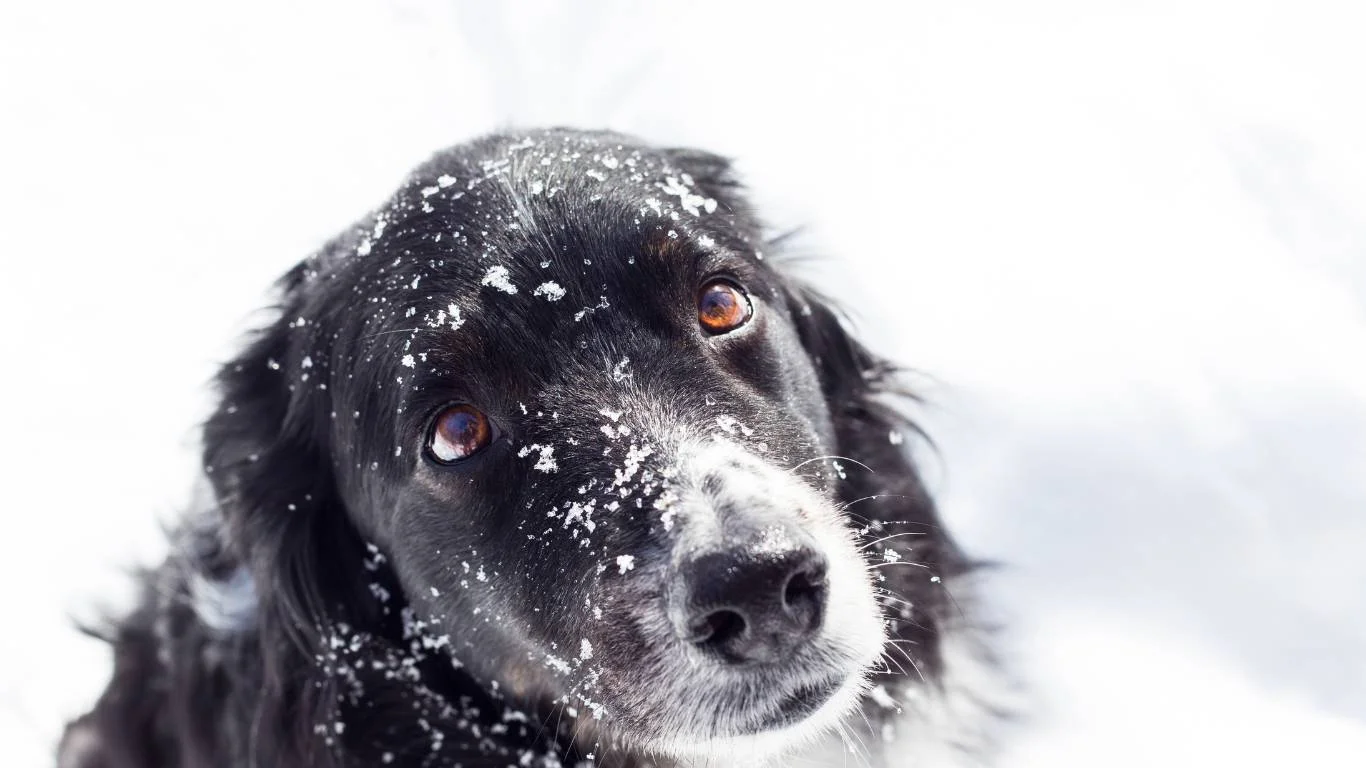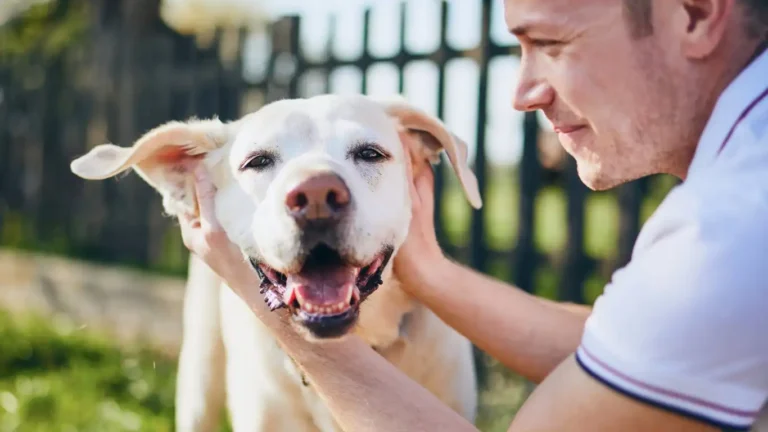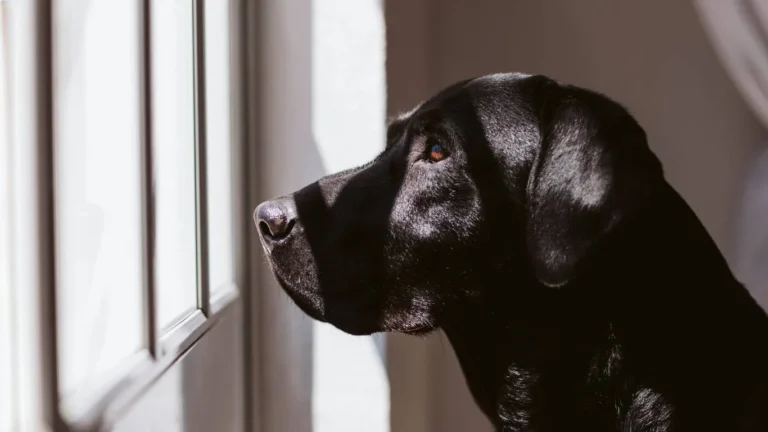Can Dogs Get Colds? Symptoms, Treatment & Easy Prevention Tips for Your Pet
As a pet nutritionist and a long-time veterinary clinic expert, I’ve often been asked, “Can dogs get colds?” And I totally understand why—our canine companions are so much a part of our families that we want to ensure they’re feeling their best at all times. Just like us, dogs can catch colds, although it’s not exactly the same as human colds. In this blog, we’ll go over the symptoms to watch out for, what you can do to help your furry friend feel better, and when you should take them to the vet. But first, let’s talk about the basics of canine colds!
What Exactly Is a Canine Cold?
Now, let’s clear something up: when we say “cold,” we’re usually referring to a viral respiratory infection. Dogs can catch something similar to a human cold, but it’s not caused by the same viruses. Canine colds are more often caused by viruses such as Canine Parainfluenza Virus (CPIV) or Canine Adenovirus, which affect their upper respiratory system.
These viruses can cause symptoms like coughing, nasal discharge, and watery eyes, and they tend to spread quickly in places where dogs are in close contact, like parks, kennels, or grooming salons. So, if your pup has been around a lot of other dogs recently, there’s a chance they could catch something. But don’t panic! A dog cold usually isn’t as serious as it sounds, though it’s important to be on the lookout for certain signs.

Common Symptoms of a Canine Cold
If you suspect your dog might have a cold, here are the most common symptoms you should be aware of:
- Coughing – This is the most noticeable sign. A dry, hacking cough might be the first thing you notice, especially if it’s persistent.
- Runny Nose – Just like humans, dogs can have a runny nose. The discharge can be clear or thick and mucousy.
- Watery Eyes – You might notice your dog’s eyes tearing up more than usual or becoming red and irritated.
- Loss of Appetite – If your dog isn’t interested in food or water, that’s a pretty clear indication they’re not feeling well.
- Lethargy – If your dog is sleeping more than usual or just seems “off,” it could be a sign that they’re fighting off an infection.
- Sneezing – While sneezing can sometimes be just a response to a little bit of dust, it’s also a common symptom of a cold.
It’s important to note that some of these symptoms could overlap with other health issues like kennel cough, so it’s key to observe your dog closely and monitor if their symptoms worsen.

How Can You Tell the Difference Between a Cold and Other Conditions?
As I mentioned, some cold symptoms can be mistaken for other conditions. For example, a persistent cough could also be a sign of kennel cough, which is a highly contagious respiratory infection caused by a combination of viruses and bacteria. On the other hand, if your dog has a fever or if their symptoms are accompanied by vomiting or diarrhea, it might not be just a cold—it could be a more serious illness that requires immediate veterinary attention.
It’s always best to err on the side of caution and give your vet a call if you’re unsure about your dog’s symptoms. Sometimes, what seems like a cold could turn out to be something more serious, so don’t hesitate to seek professional help.

Treatment Options for a Canine Cold
In many cases, a dog’s cold will resolve on its own with a little TLC and some rest. However, there are steps you can take to help your dog feel more comfortable while they recover. As a pet nutritionist, I always recommend a combination of proper care, hydration, and a cozy environment to speed up the recovery process.
1. Keep Your Dog Warm and Comfortable
Like us, dogs feel worse when they’re cold, so keep them inside and in a warm, comfortable space. Make sure they have a soft place to rest, away from drafts or anything that could make them feel worse. If your dog is particularly sensitive to cold weather, a cozy blanket or heated dog bed can make a huge difference.
2. Hydration Is Key
Dogs with colds can get dehydrated more quickly, especially if they’re not eating or drinking as much. Make sure your dog has access to fresh water at all times, and if they’re not drinking much, try offering them ice cubes or ice chips to encourage hydration. If your dog refuses to drink, you can also try offering them bone broth or low-sodium chicken broth, which is not only hydrating but also appetizing to them.
3. Avoid Overexertion
It might be tempting to take your dog for a walk to help burn off some energy, but while they’re sick, they need to rest. Overexertion can make the cold symptoms worse and delay their recovery. Stick to short, gentle potty breaks and avoid any rigorous play or exercise until your dog has fully recovered.
Keep reading for more tips on managing your dog’s cold symptoms, and don’t forget to consult your vet if symptoms worsen or if you have any concerns!
When Should You Take Your Dog to the Vet?
Now, even though most dog colds are mild and self-limiting, there are times when you should definitely seek veterinary attention. I always say that when in doubt, it’s better to be safe than sorry, especially when your pet’s health is involved. As a pet nutritionist and someone who works in veterinary clinics, I’ve seen firsthand how some cold-like symptoms can be a sign of something more serious.
1. Persistent Symptoms
If your dog’s symptoms last more than a few days without improvement, it might be time to get them checked out. While some colds in dogs can last a week or so, if your dog’s condition doesn’t seem to improve after a few days of rest, hydration, and care at home, it could be an indication of a more serious respiratory issue.
For example, kennel cough often starts off with similar symptoms but can progress into a more severe illness if left untreated. If your dog’s cough is getting worse or they’re becoming more lethargic, it’s time to see a vet. They’ll likely want to rule out other infections, like Canine Influenza, which can have similar symptoms but can be much more dangerous.
2. Difficulty Breathing
If your dog is having trouble breathing, is wheezing, or is panting excessively even when they’re not exerting themselves, you should see a vet immediately. Difficulty breathing can be a sign of several serious conditions, such as pneumonia, a collapsed trachea, or even a more severe viral infection. These are things that require professional care, so don’t wait if you notice your dog is struggling to catch their breath.
3. Other Health Issues Arise
Sometimes, a dog with a cold might develop other symptoms that signal a more serious problem. For instance, if your dog starts showing signs of vomiting, diarrhea, or has a high fever, it’s not a typical cold, and you should seek medical attention right away. These can be signs of something much more severe, like parvovirus or leptospirosis, both of which can cause serious harm to your pet.
4. Painful Symptoms
Another red flag is when your dog seems to be in pain, either from coughing, sneezing, or even general discomfort. If they’re pawing at their face, holding their mouth open, or acting more sensitive than usual, they may have an issue like an ear infection, dental issue, or sinus infection that requires treatment.
Remember, if you ever feel uncertain about what’s going on with your dog, it’s always a good idea to call your vet. They’re the best resource to help you understand whether it’s just a mild cold or something that requires intervention.

Preventing Canine Colds
Prevention is always better than cure, right? While it’s not always possible to completely avoid a cold, there are things you can do to reduce the chances of your dog catching one in the first place. Based on my experience, some simple changes in their routine can really go a long way in keeping your dog healthy.
1. Keep Your Dog Away from Sick Dogs
This one’s a no-brainer, but it’s still important! If your dog’s immune system is weakened or if they’re stressed (which can happen during travel or after vaccinations), they might be more susceptible to catching a cold. Avoid places where other sick dogs congregate, like dog parks, kennels, or grooming salons, unless you’re sure the area is clean and the dogs around are healthy.
2. Maintain a Healthy Diet and Weight
A healthy, balanced diet is key to supporting your dog’s immune system. Just like with humans, a dog’s body functions better when they’re properly nourished. Make sure they’re getting the right kind of nutrients, and keep their weight in check. Obesity can put extra strain on your dog’s body, making it harder for them to recover from illnesses.
I can’t stress enough how much a proper diet helps keep their immune system strong. If you need advice on what to feed your dog to keep them in peak health, don’t hesitate to reach out to a professional (like me!) who can provide tailored nutrition advice based on your dog’s breed, age, and lifestyle.
3. Regular Exercise and Mental Stimulation
Exercise is not just for keeping your dog’s body in shape—it’s also great for keeping their immune system strong! A fit and active dog is generally healthier and better able to fend off illnesses. But remember, during a cold, you want to avoid overexertion. Once your dog is feeling better, though, get them back on a regular routine of walks, playtime, and fun activities.
4. Keep Their Environment Clean
Just like people, dogs can pick up germs from their environment, and that includes their living space. Regularly clean your dog’s bedding, toys, and food and water bowls to help reduce exposure to viruses and bacteria. I also recommend disinfecting high-traffic areas like doorways or floors where dogs (and their paws!) frequently come and go.
5. Keep Up with Vaccinations
Finally, make sure your dog is up-to-date on their vaccinations. While vaccines won’t protect against every virus that causes cold-like symptoms, they can help prevent the spread of diseases like Canine Parainfluenza and Canine Distemper, both of which can contribute to respiratory illnesses. Keep in touch with your vet to ensure that your dog’s vaccination schedule is on track.

Home Remedies for Canine Colds
While the best way to treat a dog cold is usually with veterinary advice, there are a few home remedies that might help ease their discomfort. Just keep in mind that these are not replacements for medical treatment, especially if your dog’s symptoms worsen.
1. Steam Therapy
Steam can help clear up congestion in your dog’s nose and chest. A simple way to do this is by running a hot shower in your bathroom, closing the door, and letting your dog sit in the room with you. The steam can help loosen up mucus, making it easier for your dog to breathe. Just be sure the room is well-ventilated to avoid too much humidity buildup.
2. Humidifiers
If your dog’s having trouble with dry air or nasal congestion, using a humidifier in the room where they rest can help. The moist air can make breathing easier, and it’s gentle on their respiratory system. Just keep an eye on humidity levels to ensure the room doesn’t become too damp.
3. Warm Broth or Soup
Encourage hydration with some homemade broth or soup. A bit of low-sodium chicken broth (without onions or garlic) can tempt a dog that’s not feeling well to drink more fluids. You can even warm it up to make it extra appealing if your dog is feeling sluggish. Just make sure it’s free from any harmful ingredients!

With a little love and attention, your dog should bounce back in no time. Keep monitoring their symptoms, and remember, if anything feels off or you’re unsure about the severity of their cold, always reach out to your vet. In the end, keeping your dog healthy and happy is the most important thing!
Case Studies & Real-Life Examples
As a pet nutritionist working in veterinary clinics, I’ve seen a range of cases when it comes to canine colds. It’s always interesting to observe how different dogs react to similar symptoms. Let me share a couple of stories from my personal experience that can give you a better idea of what to expect if your dog catches a cold.
Case Study 1: Max the Golden Retriever
Max, a 5-year-old Golden Retriever, came into the clinic with symptoms that were pretty typical of a dog cold—runny nose, coughing, and a bit of lethargy. His owners were initially worried because they’d just adopted him, and they were unsure about his health history. After a thorough exam, we found that Max had been exposed to Canine Parainfluenza Virus at a doggy daycare center before his adoption. While the symptoms weren’t severe, we still prescribed some rest, hydration, and a mild cough suppressant to help Max feel more comfortable.
What’s interesting about Max’s case is that it’s a perfect example of how important it is to isolate your dog from other sick dogs, especially when you don’t know their medical background. With proper care and some patience, Max made a full recovery in about a week. His owners were so relieved to see him bounce back to his usual playful self!
Case Study 2: Daisy the Poodle
Daisy, a 7-year-old Poodle, had symptoms of a cold that went on a bit longer than expected. At first, her owners thought it was just a mild cold, but when her condition didn’t improve after several days, they brought her to the clinic. Upon examination, it became clear that Daisy wasn’t just dealing with a simple cold; she was also suffering from a mild case of kennel cough, which had progressed slightly due to the fact that she wasn’t resting enough.
With Daisy’s case, I encouraged her owners to keep her indoors and reduce her activity level to help her body focus on recovery. After a few days of rest, antibiotics (to treat any secondary bacterial infection), and increased hydration, Daisy was back to her usual happy, energetic self. It was a reminder of how important it is to monitor symptoms closely and to take a conservative approach when your dog isn’t bouncing back quickly.
These two cases show just how important it is to understand that not all “colds” are created equal. Even if your dog seems to be sick with what looks like a mild cold, always be on the lookout for warning signs that could indicate something more serious. And remember, your vet is always your best resource when you’re uncertain.

Key Takeaways: What You Need to Remember
When it comes to dog colds, there are a few important things to keep in mind:
- Monitor Symptoms Closely: If your dog’s symptoms persist for more than a few days, worsen, or if you notice new symptoms like difficulty breathing, it’s time to contact your vet.
- Rest & Hydration: Ensure your dog gets plenty of rest and stays hydrated, especially if they’re not eating or drinking well. Hydration is crucial for recovery.
- Prevention Is Key: Minimize your dog’s exposure to sick animals, maintain a healthy diet, and keep them up-to-date on vaccinations to reduce the risk of catching a cold or other illnesses.
- Vet Consultation: Don’t hesitate to reach out to your vet if you’re unsure about your dog’s symptoms or if they don’t seem to improve after a few days. It’s better to err on the side of caution.
FAQs
1. Can dogs get human colds?
No, dogs cannot catch the same viruses that cause human colds. However, they can contract viruses that affect their upper respiratory system, which can present symptoms that are similar to a human cold, like coughing and sneezing.
2. Can a dog get a cold from being outside in cold weather?
Cold weather itself doesn’t cause a dog to catch a cold. However, just like in humans, being exposed to viruses in certain environments (like dog parks or kennels) can increase the risk of infection. Keep your dog warm and dry during cold weather, but don’t worry too much about cold air causing them to catch a cold.
3. What can I do if my dog won’t eat while sick?
If your dog won’t eat, try offering bland foods like boiled chicken and rice or warm, low-sodium broth. You can also try feeding them smaller, more frequent meals. If they continue to refuse food for more than a day, contact your vet to rule out any other underlying conditions.
4. How can I prevent my dog from getting sick in the future?
Maintaining a strong immune system through a balanced diet, proper hydration, regular exercise, and up-to-date vaccinations is the best way to help prevent your dog from getting sick. Avoid exposing them to sick dogs, and keep their living environment clean.
Bonus: Additional Resources or DIY Tips
If you’re looking for more ways to keep your dog healthy and help them recover from a cold, here are a few resources and DIY tips that can be helpful:
- PawPatron – Pet Care & Health Tips – Our blog features more pet health articles and expert advice on how to keep your furry friends feeling their best!
- DIY Doggie Cold Remedy – A simple recipe for a homemade doggie broth that can help soothe their throat and encourage hydration: Mix a little low-sodium chicken broth with water, and serve it lukewarm. This is often a hit with dogs!
- Consulting with a Pet Nutritionist – If you’re worried about your dog’s diet during their cold, consulting a certified pet nutritionist can give you a tailored feeding plan that helps boost their immune system.
Appendix: Table, References, Disclaimer, and Call to Action
References:
- American Kennel Club: Canine Colds
- Cornell University: Kennel Cough & Canine Respiratory Issues
- PetMD: Symptoms of Dog Colds
Disclaimer: This article is meant for informational purposes only and should not replace professional veterinary advice. If your dog is showing symptoms of illness, please consult a licensed veterinarian for proper diagnosis and treatment.
If you found this article helpful, feel free to share it with other dog owners who might be interested in learning more about how to care for their sick pups. Remember, keeping your dog healthy starts with knowledge and care!






